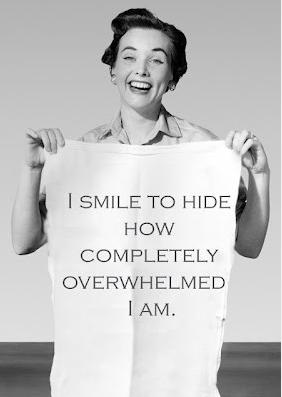It is easy to look around and see the clutter in our lives. It’s in that pile of papers that we dread going through and in that overstuffed closet that we hate looking at. It’s in those crafts made by our kids that line our shelves and the gifts given by friends that we can’t part with, but don’t care for. It’s in those boxes of sentimental heirlooms or items from our past that are stored in the attic. We know why we feel overwhelmed and bogged down, because we can see it all.
The harder thing to see is our emotional clutter. Those feelings that we carry with us that overwhelm and bog us down are a much harder problem to solve. Fortunately, physical clutter and emotional clutter are not mutually exclusive, they work together. As we clear physical clutter from our home, some emotional clutter will automatically leave with it. As we take a hard look at our emotional clutter, we will more easily be able to remove some of our physical clutter as well.
“Just as physical clutter gets in the way of our ability to get things done in our home or office, emotional clutter gets in the way of our being able to achieve our goals, have satisfying relationships, and be happy” according to Linda S. Pucci, Ph.D. (http://innerresourcecenter.com/how-to-get-rid-of-emotional-clutter)
I always say that “delayed decisions create clutter” and most of the time we delay our decisions because we are not prepared to deal with the emotion of making a decision. For example, you receive a gift that you don’t care for. You choose to set it aside and deal with it later. You know, deep down, that you don’t want to keep that item but the guilt you feel about getting rid of it is something that you can’t or don’t want to deal with – therefore the emotional clutter (the guilt) has caused you to create physical clutter (the unwanted gift) in your home.
Instead of setting that item aside to deal with later, take a moment to acknowledge the thoughtfulness of your gift. A friend or family member has taken time give you something they think that you would like. Give them credit. Send a note or text message to thank them, being sincere that you appreciate their thoughtfulness, that it was nice to hear from them, etc.. Then, allow yourself to let the item go – guilt free. Donate it. Give it to someone who you think will appreciate it. Even throw it away if necessary. But deal with it and the emotion of it at that time.
It’s important to understand that our feelings are tied more to the memory of something then to an item itself. It’s possible to get rid of items that provide memories because the memory will always be there even if the item is not. By keeping the things in our life that we find beautiful, we add value to our daily life and by saving fewer things we increase their value.


Hi Bridget,
I have found this to be so true. Clearing clutter is really about making decisions. Taking five minutes to clear the top of my dresser today gave me a seemingly out of proportion sense of relief. It’s nice to have a clean dresser…but even nicer to make those decisions and move on. Thanks for all your help in learning to let go of my emotional clutter – both inside and out!
Hey Laura,
It was so good to hear from you! I hope all is going well for you. You are absolutely right about making those decisions and moving on. If you can continue to make those decisions as different things come into your life, you will have less clutter (and less of the project) down the road.
Bridges
Moving was a forced opportunity to organize not only what was in my home going to the new place. But what i parted with as well stored in my garage. I feel so much clearer with the downsize and now knowing what’s left, where it is, and dealing with a lot less is also less overwhelming. Thanks for the great article!
I know that you have been struggling with your space and your garage for some time. Sometimes it takes a move to force you to deal with that “emotional clutter” in you life. I also know that you have been proactive in preventing it in the future! Great job!